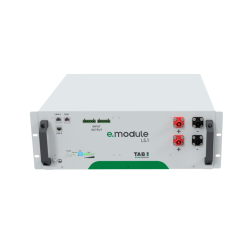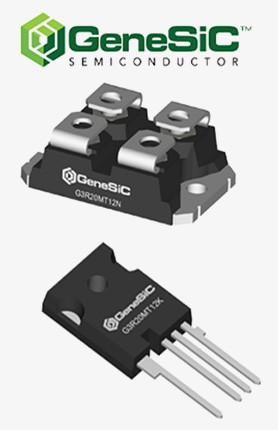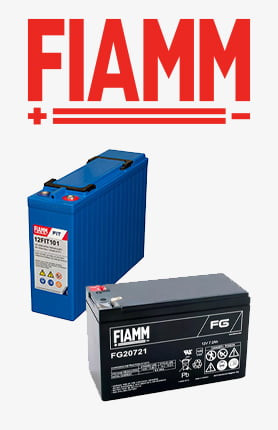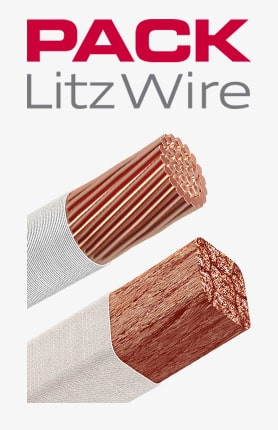-
BackX
-
Components
-
-
Category
-
Semiconductors
- Diodes
- Thyristors
-
Electro-insulated Modules
- Electro-insulated Modules | VISHAY (IR)
- Electro-insulated Modules | INFINEON (EUPEC)
- Electro-insulated Modules | Semikron
- Electro-insulated Modules | POWEREX
- Electro-insulated Modules | IXYS
- Electro-insulated Modules | POSEICO
- Electro-insulated Modules | ABB
- Electro-insulated Modules | TECHSEM
- Go to the subcategory
- Bridge Rectifiers
-
Transistors
- Transistors | GeneSiC
- SiC MOSFET Modules | Mitsubishi
- SiC MOSFET Modules | STARPOWER
- Module SiC MOSFET ABB’s
- IGBT Modules | MITSUBISHI
- Transistor Modules | MITSUBISHI
- MOSFET Modules | MITSUBISHI
- Transistor Modules | ABB
- IGBT Modules | POWEREX
- IGBT Modules | INFINEON (EUPEC)
- Silicon Carbide (SiC) semiconductor elements
- Go to the subcategory
- Gate Drivers
- Power Blocks
- Go to the subcategory
- Electrical Transducers
-
Passive components (capacitors, resistors, fuses, filters)
- Resistors
-
Fuses
- Miniature Fuses for electronic circuits - ABC & AGC Series
- Tubular Fast-acting Fuses
- Time-delay Fuse Links with GL/GG & AM characteristics
- Ultrafast Fuse Links
- Fast-acting Fuses (British & American standard)
- Fast-acting Fuses (European standard)
- Traction Fuses
- High-voltage Fuse Links
- Go to the subcategory
- Capacitors
- EMI Filters
- Supercapacitors
- Power surge protection
- TEMPEST emission revealing filters
- Go to the subcategory
-
Relays and Contactors
- Relays and Contactors - Theory
- 3-Phase AC Semiconductor Relays
- DC Semiconductor Relays
- Controllers, Control Systems and Accessories
- Soft Starters and Reversible Relays
- Electromechanical Relays
- Contactors
- Rotary Switches
-
Single-Phase AC Semiconductor Relays
- AC ONE PHASE RELAYS 1 series| D2425 | D2450
- One phase semiconductor AC relays CWA and CWD series
- One phase semiconductor AC relays CMRA and CMRD series
- One phase semiconductor AC relays - PS series
- Double and quadruple semiconductor AC relays - D24 D, TD24 Q, H12D48 D series
- One phase semiconductor relays - gn series
- Ckr series single phase solid state relays
- One phase AC semiconductor relays for DIN bus - ERDA I ERAA series
- 150A AC single phase relays
- Rail Mountable Solid State Relays With Integrated Heat Sink - ENDA, ERDA1 / ERAA1 series
- Go to the subcategory
- Single-Phase AC Semiconductor Relays for PCBs
- Interface Relays
- Go to the subcategory
- Cores and Other Inductive Components
- Heatsinks, Varistors, Thermal Protection
- Fans
- Air Conditioning, Accessories for Electrical Cabinets, Coolers
-
Batteries, Chargers, Buffer Power Supplies and Inverters
- Batteries, Chargers - Theoretical Description
- Modular Li-ion Battery Building Blocks, Custom Batteries, BMS
- Batteries
- Battery Chargers and Accessories
- Uninterruptible Power Supply and Buffer Power Supplies
- Inverters and Photovoltaic Equipments
- Energy storage
- Fuel cells
- Lithium-ion batteries
- Go to the subcategory
-
Automatics
- Spiralift Lifts
- Futaba Drone Parts
- Limit Switches, Microswitches
- Sensors, Transducers
-
Infrared Thermometers (Pyrometers)
- IR-TE Series - Water-proof Palm-sized Radiation Thermometer
- IR-TA Series - Handheld Type Radiation Thermometer
- IR-H Series - Handheld Type Radiation Thermometer
- IR-BA Series - High-speed Compact Radiation Thermometer
- IR-FA Series - Fiber Optic Radiation Thermometer
- IR-BZ Series - Compact Infrared Thermometers
- Go to the subcategory
- Counters, Time Relays, Panel Meters
- Industrial Protection Devices
- Light and Sound Signalling
- Thermographic Camera
- LED Displays
- Control Equipments
- Go to the subcategory
-
Cables, Litz wires, Conduits, Flexible connections
- Wires
- Cable feedthroughs and couplers
- Litz wires
- Cables for extreme applications
- Sleevings
-
Braids
- Flat Braids
- Round Braids
- Very Flexible Flat Braids
- Very Flexible Round Braids
- Cylindrical Cooper Braids
- Cylindrical Cooper Braids and Sleevings
- Flexible Earthing Connections
- Galvanized and Stainless Steel Cylindrical Braids
- PCV Insulated Copper Braids (temp. up to 85C)
- Flat Aluminium Braids
- Junction Set - Braids and Tubes
- Go to the subcategory
- Traction Equipment
- Cable Terminals
- Flexible Insulated Busbars
- Flexible Multilayer Busbars
- Cable Duct Systems
- Go to the subcategory
- View all categories
-
Semiconductors
-
-
- Suppliers
-
Applications
- CNC Machine Tools
- DC and AC Drives (Inverters)
- Energetics
- Energy bank
- Equipment and Components for Hazardous Areas [Ex]
- Equipment for Distribution, Control and Telecommunications Cabinets
- HVAC Automation
- Induction Heating
- Industrial Automation
- Industrial Protective Devices
- Machines for Drying and Wood Processing
- Machines for Thermoforming Plastics
- Mining, Metallurgy and Foundry
- Motors and Transformers
- Power Supplies (UPS) and Rectifier Systems
- Printing
- Temperature Measurement and Regulation
- Test and Laboratory Measurements
- Tram and Railway Traction
- Welding Machines
-
Assembly
-
-
Inductors
-
-
Induction devices
-
-
Service
-
- Contact
- Zobacz wszystkie kategorie
Energy storage
Electrochemical batteries, or accumulators, allow energy to be stored in an easily retrievable form. The advantages of accumulators include a high energy density parameter. Energy density is the unit amount of stored electrical energy, which can be expressed by volume or mass....
Electrochemical batteries, or accumulators, allow energy to be stored in an easily retrievable form. The...
| Image | View the product | No. Manufacturer | ||||
|---|---|---|---|---|---|---|
| picture_as_pdf |

|
TAB | Module TAB e.module L5.1 48V | SEE IT | 1026194 | On Order |
Electrochemical batteries, or accumulators, allow energy to be stored in an easily retrievable form. The advantages of accumulators include a high energy density parameter. Energy density is the unit amount of stored electrical energy, which can be expressed by volume or mass. The disadvantages of using accumulators include self-discharge, wear manifested in parameter changes – so-called battery aging, long charging time, temperature influence, and in some technical solutions, short lifespan.
Two types of accumulators are used in energy storage systems: lead-acid and lithium-ion.
Types of energy storage systems
Lead-acid batteries have an efficiency of around 70%. They are characterized by low cost, simple charging system, and the ability to handle short-term high current loads. This makes them useful in uninterruptible power supply (UPS) systems. A major disadvantage is their short lifespan (about 1000 charge-discharge cycles) and their construction. In lead-acid batteries, the electrolyte is in a liquid state, which can lead to leaks and requires electrolyte refilling. To mitigate this problem, lead-acid batteries are made maintenance-free:
- SLA – Sealed Lead Acid
- VRLA – Valve Regulated Lead Acid
They are produced using two technologies:
- Gel batteries, where the sulfuric acid solution mixed with silica forms a gel, acting as the electrolyte. However, they are less suited for high-power applications due to limited high current discharge capability.
- AGM (Absorbed Glass Mat) batteries, where the electrolyte is absorbed in a porous glass mat separator.
Lithium-ion batteries (Li-ion) have an efficiency of about 94%. These cells are among the lightest, making them ideal for electronic devices. Over time, they have also been used in electric vehicles. EV batteries are more durable (lasting for decades or up to 1800 charge-discharge cycles), and they feature cooling and heating systems. These cells can be fast-charged from 0 to 80% in 15–30 minutes with minimal impact on lifespan. Thanks to electromobility advancements, lithium-ion batteries are increasingly considered for stationary energy storage in renewable energy systems characterized by irregular and unstable operation.
Nickel-metal hydride (NiMH) batteries have efficiencies up to 92% and lifespans up to 2000 charge-discharge cycles. Their main advantage is the absence of toxic cadmium. They have high energy density, capacity, and reduced memory effect. Their disadvantage is a limited ability to provide high currents. NiMH batteries are prone to self-discharge, but ongoing technology development is reducing this issue.
Reactive power compensation using energy banks
Uninterruptible power supply (UPS) systems are used to power essential devices during power outages or protect sensitive components from network disturbances.
UPS systems include capacitors, meaning both active and reactive (capacitive) power is drawn. Newer UPS designs include power factor correction (PFC) systems to reduce harmonics and reactive power draw. This improves the power factor (cosφ) at full load. Another solution is to use a phase shifter in the input circuit, which reduces capacitive input power to zero.
How is an electric energy storage system built?
In an energy storage system, the following components can be identified:
- bidirectional converter – a DC/AC and AC/DC inverter,
- battery pack – a set of chemical accumulators,
- battery management system (BMS),
- programmable controller – manages algorithms,
- supervisory and visualization system (GUI – Graphic User Interface) – allows users to monitor and control the installation,
- auxiliary components for grid connection – installation metering or isolation transformers.
The bidirectional converter deserves a detailed explanation. It’s a DC/AC and AC/DC converter responsible for battery charge/discharge control and energy exchange with the power grid. It ensures proper voltage parameters and peak current in case of overload. It must synchronize with the grid and provide backup operation during blackouts. The converter must also "care" for the battery – charge according to proper characteristics, prevent overheating, and avoid thermal runaway. It should communicate with the BMS and ensure galvanic isolation (e.g., via an output transformer).
Photovoltaics – energy storage improves profitability
A solution to improve PV system profitability is energy storage. Photovoltaic systems equipped with these devices store excess generated power instead of feeding it into the grid, using batteries such as nickel-metal hydride (Ni-MH) or increasingly lithium-ion (Li-ion). This allows flexible power use and avoids unfavorable prosumer billing rules. Energy storage makes PV-equipped buildings independent from the power grid, enabling truly free electricity usage.
Photovoltaics’ requirements – energy storage for PV systems
Batteries used in PV systems must meet specific requirements. DACPOL’s energy storage units must primarily be selected for capacity – matching the installation’s total power. It’s assumed that 1–1.5 kWh of capacity is needed per 1 kWp of installation.
The second important parameter is power, defining how many devices the storage can supply simultaneously. PV system design considers the building’s energy demand, and battery selection should follow the same logic to enable both energy accumulation and backup power functionality.
Efficiency and performance are also key factors. Home energy storage systems offered by DACPOL use:
- lithium-ion batteries with the highest efficiency,
- nickel-metal hydride batteries with slightly lower efficiency.
These batteries ensure efficient PV system operation and reliable power to connected devices.
PV energy storage and lead-acid batteries
Energy storage systems with lead-acid batteries are not recommended for use with photovoltaics. They have low durability due to poor resistance to frequent charging cycles. They also lose capacity at high temperatures and have large physical sizes, making high-power storage installations bulky.



